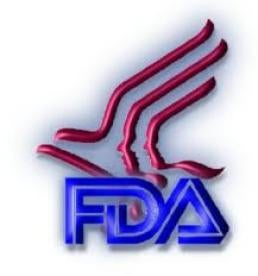The Food and Drug Administration (FDA) recently issued a final guidance addressing postmarket surveillance for medical devices. The FDA is authorized to require postmarket surveillance for any Class II or Class III device in four circumstances: (1) the failure of the device would be reasonably likely to have serious adverse health consequences; (2) the device is intended to be implanted in the human body for more than one year; (3) the device is a life-sustaining or life-supporting device used outside a device user facility; or (4) the device is expected to have significant use in pediatric populations.
The FDA is authorized to order prospective postmarket surveillance for up to 36 months unless the manufacturer and the FDA agree to extend that timeframe or, if there is no agreement, after the completion of a dispute resolution. The FDA may require a prospective surveillance period of more than 36 months, however, with respect to a device that is expected to have significant use in pediatric populations, if necessary to assess the impact of the device on growth and development, or the effects of growth, development, activity level, or other factors on the safety or efficacy of the device.
A firm’s failure or refusal to comply with a requirement for postmarket surveillance, including the failure to commence surveillance within 15 months of an FDA order, is a prohibited act and renders the device misbranded. Of course, violations of an order may lead to enforcement actions including seizure of product, injunction, prosecution, and/or civil money penalties.
Issuance of a “522 Order” And Commencement of Postmarket Surveillance
When the FDA obtains information (from medical device reports, scientific literature, or other sources) that leads it to consider issuing a postmarket surveillance order under section 522 of the Food, Drug & Cosmetic Act (FDCA), it assigns a “pre-522 team” to evaluate numerous factors with the goal of making a recommendation on whether or not a 522 order should be issued to address a public health question.
As set forth in the final guidance, some of the factors discussed by FDA’s pre-522 team include:
-
Are the statutory criteria met?
-
What is the public health question? The delineation of the public health question is the most important element discussed by the team.
-
What is the public health question based on? It should be based on FDA's evaluation of currently available data. Examples include but are not limited to: scientific/medical concern from the review of a premarket submission and/or observed issues from the premarket data, a recall, medical device reports (MDRs), case studies, literature, or other source.
-
Is the public health issue device-specific or device type-specific?
-
For a device for which a condition of clearance or approval is being considered, can and should the public health question be addressed premarket rather than as part of a 522 order?
-
Is there any other source of data (e.g., MDR review, literature) or action (e.g., revised labeling, public health notice, recall), or a combination thereof, that may be used to address the public health question?
-
Does another ongoing study (e.g., PMA post-approval study as described in 21 CFR 814.82(a)(2)) address the public health question?
-
What types of 522 postmarket surveillance design(s) should be recommended? Feasibility and timeliness of the different types of postmarket surveillance should be considered.
-
What combination of efforts should be considered to address the public health question? In addition, what changes, if any, are being made with regard to the premarket review?
Postmarket Surveillance Plan
The final guidance notes that a manufacturer must submit a postmarket surveillance plan within 30 days of receipt of the 522 order and commence surveillance not later than 15 months after the day on which the FDA issues the 522 order. The FDA will review all postmarket surveillance submissions and respond within 60 calendar days. If there are multiple postmarket surveillance requirements in a 522 order, then a separate postmarket surveillance plan should be submitted for each requirement. See 21 CFR 822.8.
The general and specific content for a postmarket surveillance submission, including the surveillance plan, is outlined in 21 CFR 822.9 and 822.10. The final guidance sets forth in more detail the elements to include in most postmarket surveillance submissions.
The FDA states that it will evaluate the proposed surveillance plan to determine whether it is administratively complete and whether the plan will result in the collection of useful data that will answer the surveillance questions. See 21 CFR 822.16. Accordingly, FDA may issue one of the following decision letters: (1) Not acceptable (administratively incomplete); (2) Approval; (3) Minor deficiency; (4) Major deficiency; or (5) Disapproval. If a manufacturer disagrees with FDA about the content of the plan or if the plan is disapproved, possible recourse options are described in 21 CFR 822.22. The final guidance also discusses how to propose a change to a postmarket surveillance plan.
Types of Postmarket Surveillance
The FDA may order postmarket surveillance to address a wide variety of device-related public health questions: randomized clinical trial; study; retrospective cohort study; cross-sectional study; enhanced surveillance; active surveillance; comprehensive, linked, registry-based surveillance; meta-analysis; prospective and retrospective study; case control study; bench lab study; animal study; and, “other design.” The final guidance includes a brief definition for each of these types of surveillance.
Postmarket Surveillance Reports
As provided at 21 CFR 822.38, manufacturers must submit interim and final reports as specified in an approved postmarket surveillance plan. The final guidance discusses different reporting statuses, the FDA’s evaluation of the reports, and the content of the reports. The FDA recommends the Final Postmarket Surveillance Report be submitted no later than three months after study/surveillance completion.
After approval of the manufacturer’s plan, the FDA may disclose the contents of the original submission and any amendments, supplements, or reports, in accordance with applicable disclosure laws, such as the Freedom of Information Act. When the FDA discloses such information, it will continue to protect any trade secret or confidential commercial information, as well as any personal privacy information of patients. See 21 CFR 822.23.
A copy of the final guidance can be found here.



 i
i

